The Secret to Using Purple in Your Garden (And Getting It Right)
I’ve been designing and planting gardens for a long time, and you wouldn’t believe the color requests I get. But honestly, the one color people come back to again and again is purple. There’s just something about it. It can make a garden feel calm and sophisticated, or even a little wild and mysterious. It adds a kind of depth that other colors just can’t touch, pulling your eye in and making the whole space feel bigger and more alive.
In this article
But getting purple right is more than just grabbing a few purple-flowered plants from the local big-box store. It’s about understanding the plants themselves—how their color shifts with the light, and how their basic needs will ultimately decide if they look vibrant or… well, sad.
This guide is built on all those lessons learned in the dirt, both the big wins and the frustrating mistakes. Let’s dig in.
So, Why Are Some Plants Purple Anyway?
Before we get to the fun part (the plants!), it helps to know what’s going on behind the scenes. That gorgeous purple color comes from natural pigments called anthocyanins. These are the same things that give blueberries and red cabbage their rich color. The exact shade you see—from a reddish-purple to a deep, almost-black violet—depends on the specific type of pigment and even the pH inside the plant’s cells.
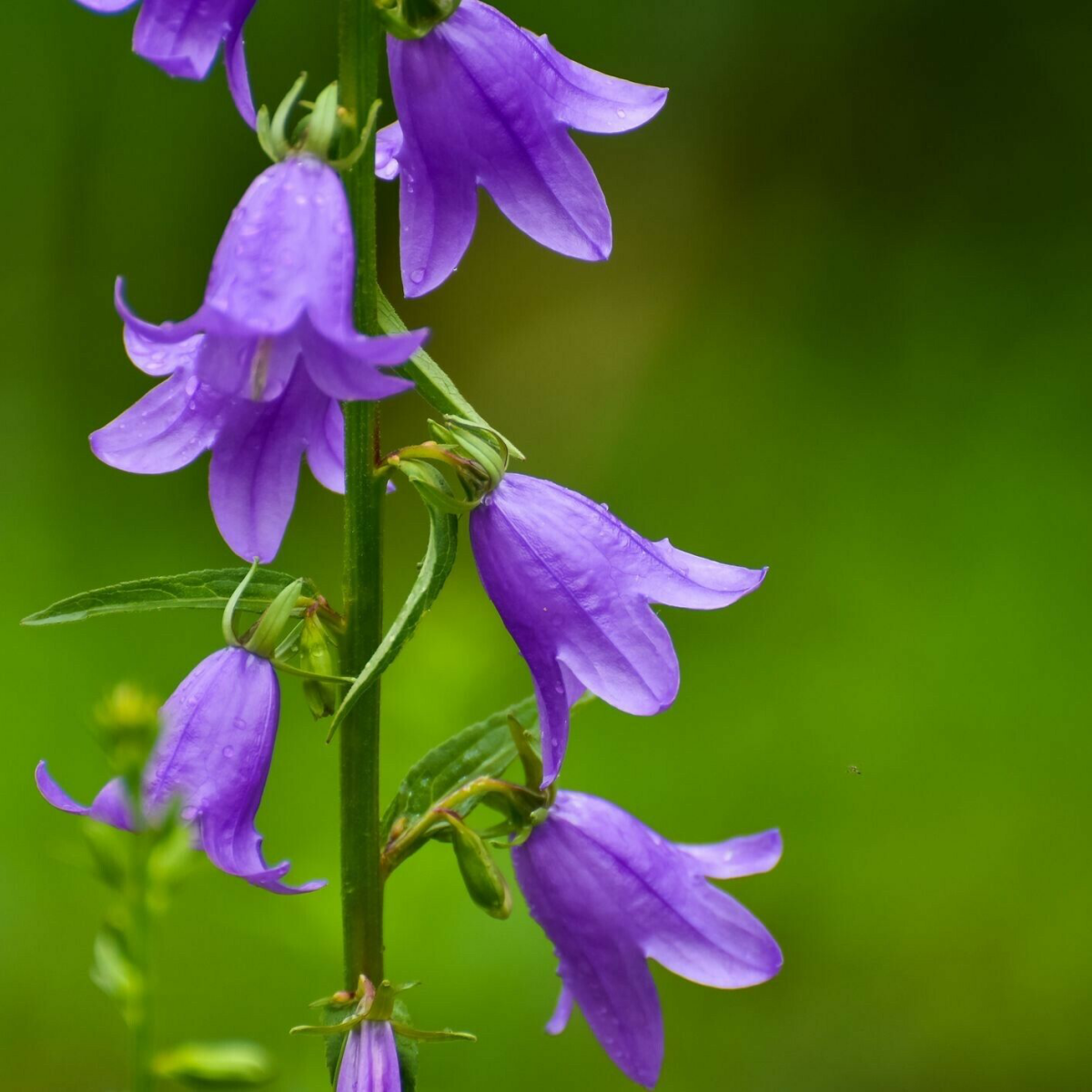
Sunlight is a huge factor here. A lot of purple-leafed plants actually produce more of these pigments as a kind of natural sunscreen. It’s a protective measure. This means a plant like Purple Heart (Setcreasea) will look its absolute best, a stunning deep purple, when it’s basking in full sun. Stick it in the shade, and it might start looking a bit washed out and greenish. So, placement is everything!
Oh yeah, and soil pH can play a role, too. It’s not usually as dramatic as with hydrangeas, but you might notice a difference. More acidic soil can sometimes push the color toward blue-purple, while alkaline soil might bring out more of the reddish tones in certain plants.
My Go-To Purple Plants That Never Disappoint
Okay, let’s talk about the workhorses. These are the plants I rely on for their great performance, beauty, and versatility. I’ll share how I make them thrive and what to expect.
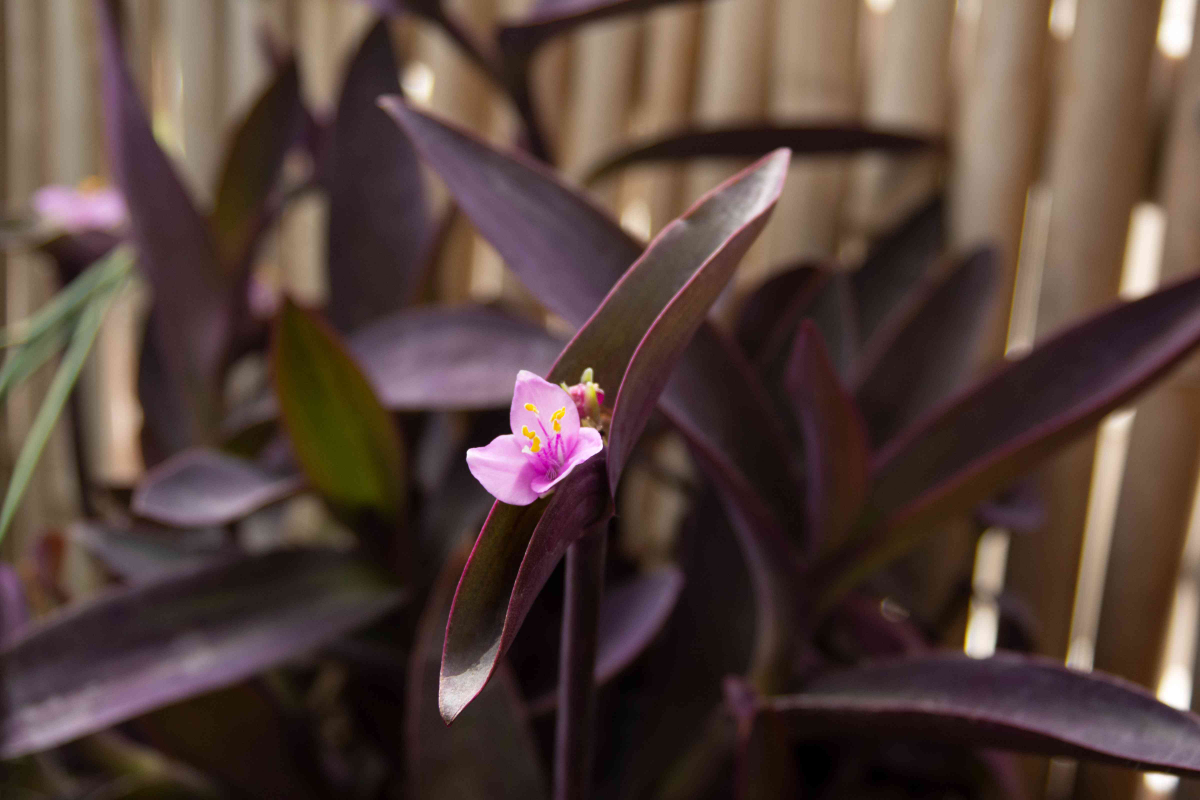
1. Perennial Sage (Salvia)
When a client wants a tough, long-blooming purple plant that laughs at heat, I almost always start with Salvia. The perennial varieties are absolute champions of the garden border. Their spiky flowers stand up tall and create a constant buzz of happy bees from late spring right into summer.
From my experience, I once designed a huge, low-water garden for a commercial property where we planted hundreds of ‘Caradonna’ Salvia. The deep violet-blue stems and flowers created this incredible wave of color that needed almost zero care once it was established. They handled the brutal reflected heat from the pavement and still looked amazing.
Here’s how you get it right:
- Where to Plant: Salvia absolutely demands good drainage. If you have heavy clay soil like I do, you’ve got to amend it. I mix in compost and a bit of coarse horticultural sand (heads up: NOT play sand, which will turn your soil into concrete) to prevent root rot. Give them full sun—at least six hours of direct light for strong stems.
- Watering: Water them well to get them started, but once they’re established, they’re incredibly drought-tolerant. The most common mistake is overwatering, which leads to weak, floppy plants. Just stick your finger two inches into the soil; if it’s dry, it’s time to water.
- Maintenance & The ‘Chop’: This is the secret sauce. After the first big wave of flowers starts to fade, it’s time for what I call ‘the chop.’ Don’t be shy! Grab your shears and cut the entire plant back by about half. Yes, half. It looks scary for a week, but I promise it will reward you with a second, full flush of blooms later in the season.
- Good to know: You can pick up a healthy one-gallon Salvia at most garden centers for between $12 and $20.
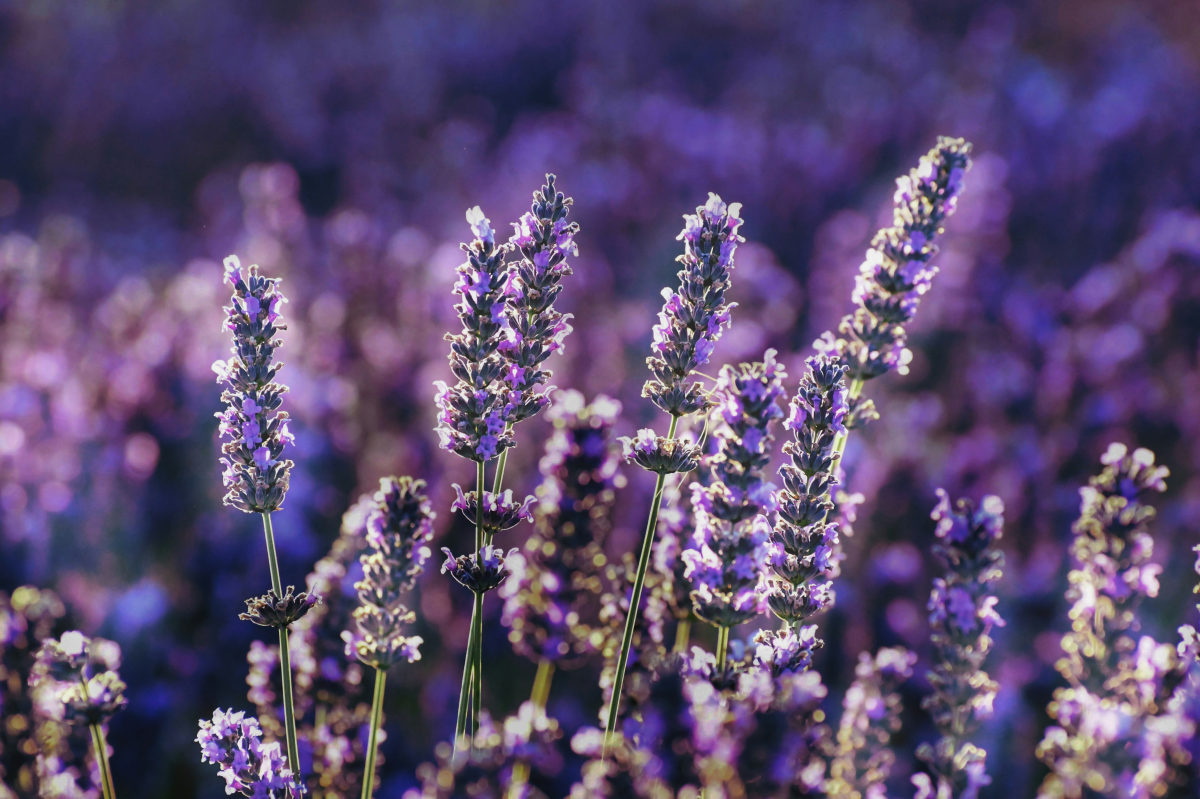
2. Lavender
You can’t talk about purple without talking about Lavender. It’s a classic for a reason! The silvery-green foliage looks fantastic all season, and the fragrant purple wands are a delight for both eyes and noses. But here’s the deal with lavender: it’s picky about its living conditions.
It dreams of a hot, dry, sunny slope with gritty soil. It absolutely hates having wet feet. To be frank, the fastest way to kill lavender is to plant it in dense, wet soil and overwater it. Think gravel, not rich compost. It’s perfect for those tricky dry spots where nothing else seems to grow. For a tough and reliable variety, look for ‘Munstead’ or ‘Hidcote.’ A small plant will run you about $8, while larger one-gallon pots are closer to $20.
3. Coral Bells (Heuchera)
What about the shady spots? That’s where Heuchera comes in. While they do flower, you’re really growing these for their incredible foliage. They come in a rainbow of colors, but the purple varieties are stunning for brightening up a dark corner.
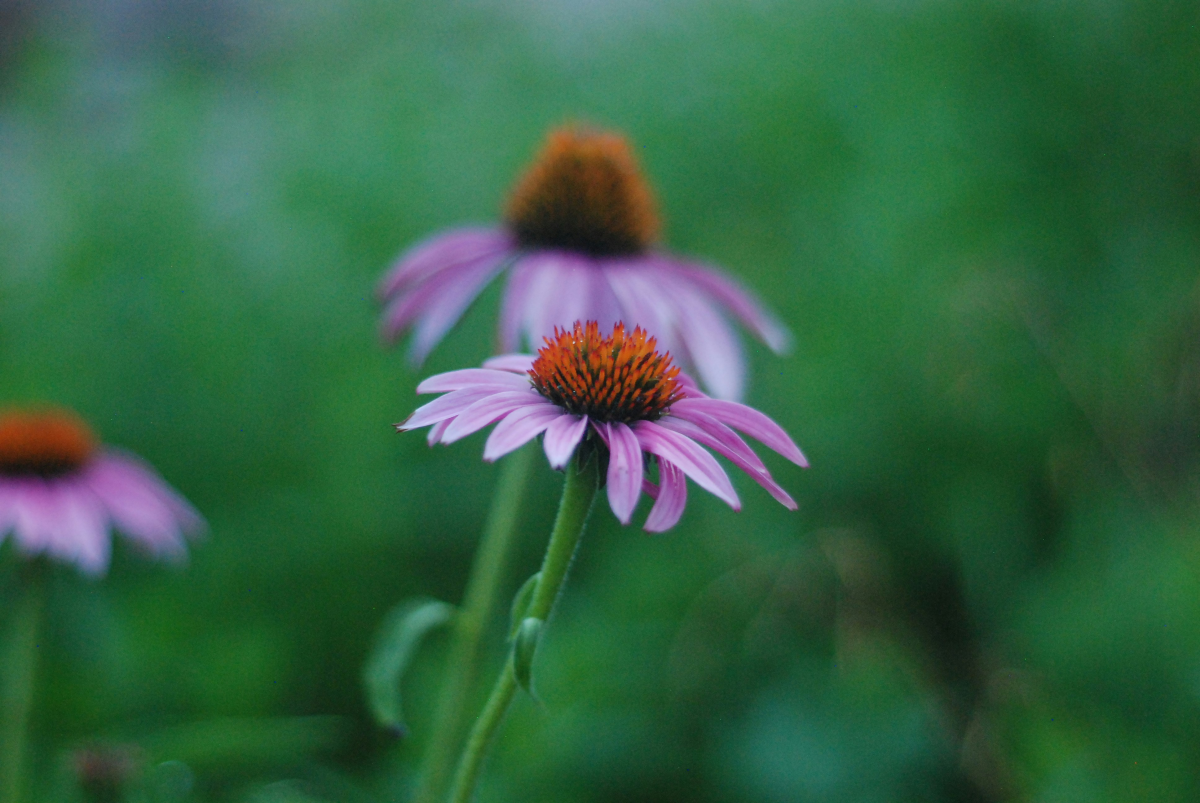
Look for varieties like ‘Palace Purple’ or the more vibrant ‘Dolce Wildberry.’ They form these lovely, neat mounds of color. Unlike Salvia and Lavender, they prefer part-shade and consistently moist, well-drained soil. They don’t want to be waterlogged, but they don’t like to dry out completely either. They’re a fantastic, low-maintenance choice for adding a splash of rich color under taller plants or along a shady border. Expect to pay around $15 to $25 for a nice-sized plant.
Need Purple Now? Try These Easy Annuals
Sometimes you just want instant gratification, right? If you want to add a punch of purple for the season, annuals are your best friend. They’re inexpensive and give you a ton of color right away.
- Petunias: You can find petunias in every shade of purple imaginable, from pale lilac to a velvet, almost-black. They are perfect for containers, window boxes, and hanging baskets. A small 4-pack usually costs less than $5. Just keep them fed and watered, and they’ll bloom their heads off all summer.
- Verbena: Another great choice for containers and hot, sunny spots. Trailing verbena will spill beautifully over the sides of pots, and the upright varieties make great fillers. They are tough, heat-tolerant, and bring in the butterflies.
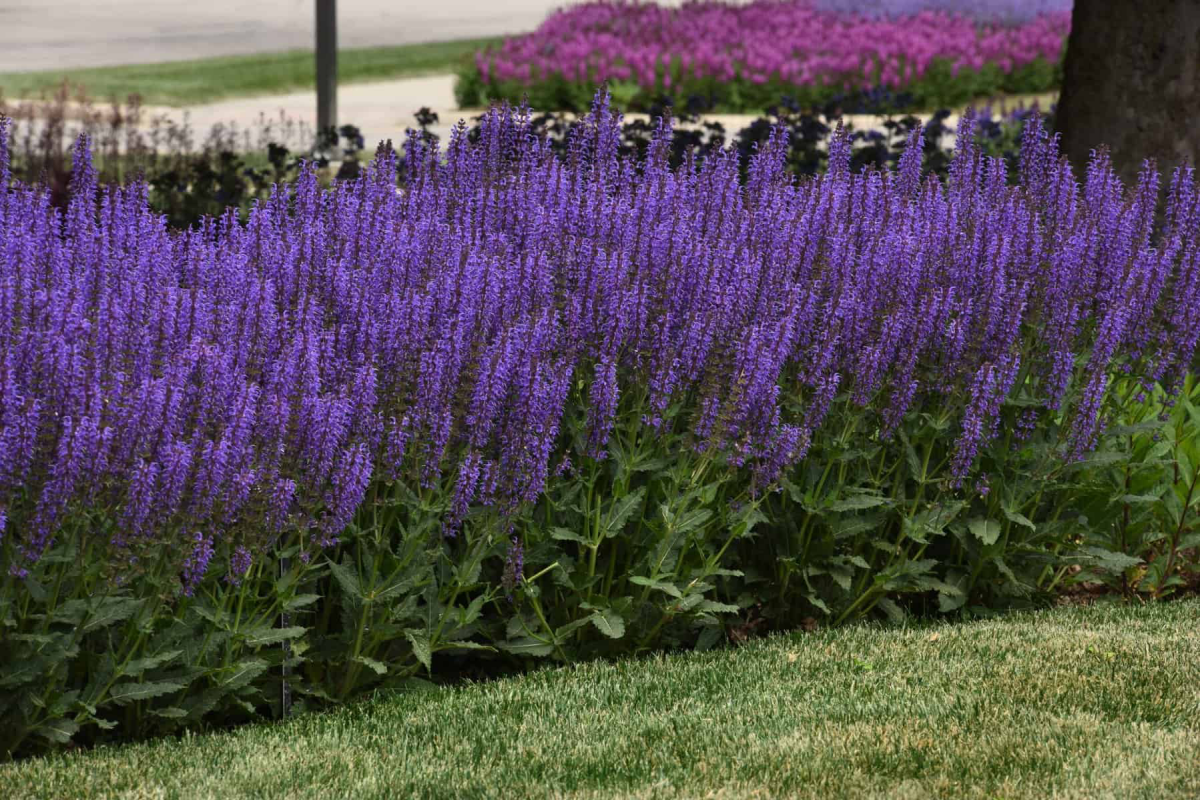
Making Purple Pop: My Favorite Color Combos
Purple is great on its own, but it truly sings when you pair it with the right colors. A lesser-known trick is to think about complementary colors on the color wheel.
- Chartreuse Green: This is my absolute favorite. The electric, limey-green of a ‘Lime Rickey’ Heuchera or a ‘Goldmound’ Spirea next to a deep purple Salvia is just chef’s kiss. It makes the purple look richer and more intense.
- Sunny Yellow: Pairing purple with a bright, sunny yellow creates a cheerful and vibrant look. Think about planting purple Salvia behind a clump of yellow Coreopsis or Black-Eyed Susans.
- Bold Orange: If you really want to make a statement, pair purple with a fiery orange. This combo is high-energy and exciting. Try some deep purple petunias with orange Zinnias in a pot. It’s a guaranteed head-turner.
Quick Fixes for Your Purple Plants
Even the pros run into issues. Here are a couple of common problems and how to solve them.
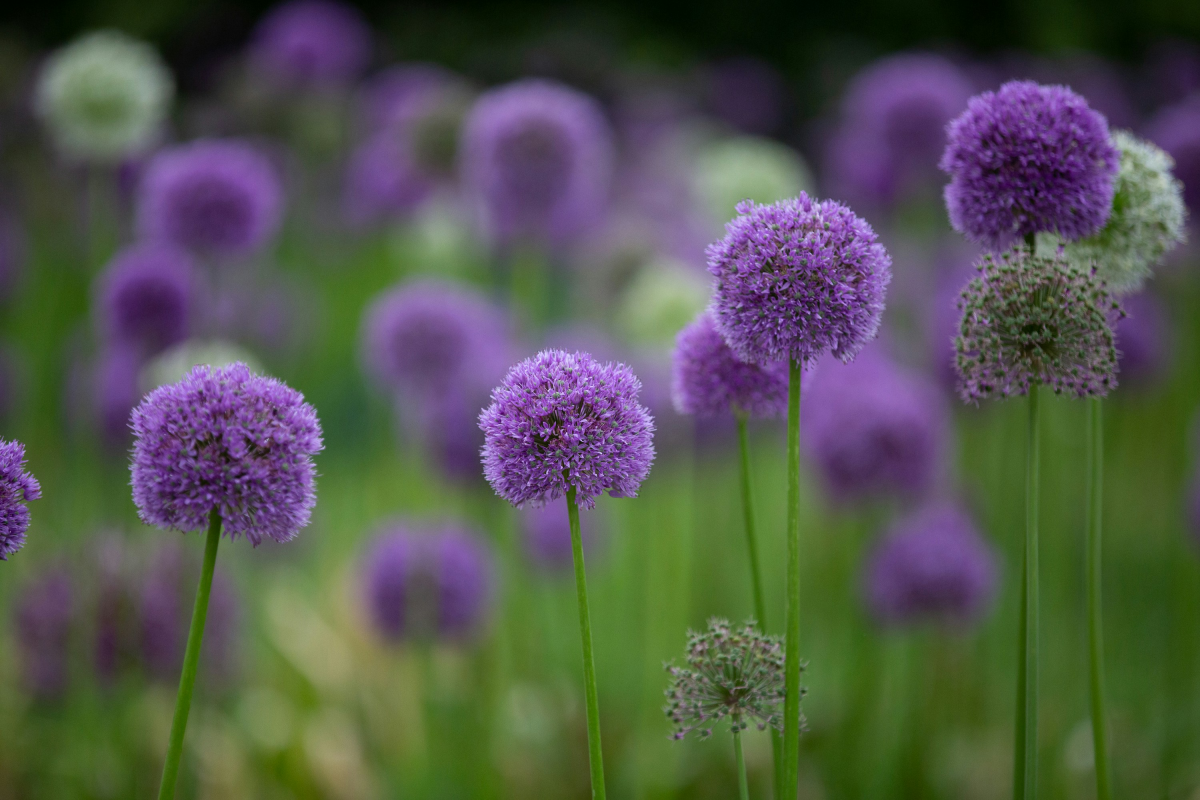
Problem: My purple leaves are turning green!
Answer: Nine times out of ten, this means the plant needs more sun. As we talked about, many plants produce those purple pigments as a reaction to strong light. Move it to a sunnier spot if you can.
Problem: My plant’s stems are all weak and floppy.
Answer: This is usually a sign of too much of a good thing—either too much water, too much rich fertilizer, or not enough sun. For plants like Salvia and Lavender, cut back on the water and make sure they’re getting at least 6 hours of direct sun. Floppiness is their way of saying they’re a little too comfortable.
Galerie d’inspiration
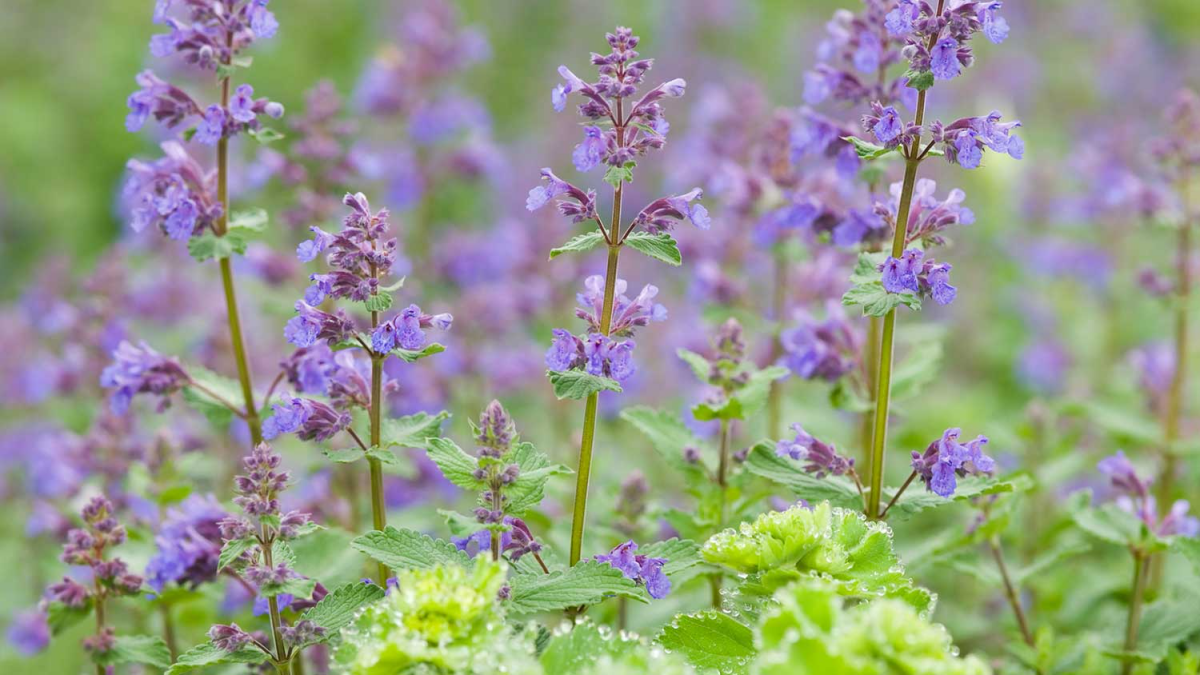

Purple doesn’t have to stand alone. To make it truly pop, think in terms of complementary colors. The right partner can elevate a simple purple into something spectacular.
- Chartreuse & Lime Green: The electric yellow-green foliage of a ‘Wasabi’ Coleus or Golden Creeping Jenny creates a vibrant, high-energy contrast against deep purples.
- Silver & Grey: For a more serene and sophisticated palette, pair purple with the silvery leaves of Lamb’s Ear (Stachys byzantina) or Dusty Miller.
- Sunset Orange & Apricot: A bold, artistic choice. The warm tones of an orange poppy or Geum ‘Totally Tangerine’ next to a purple Salvia create a breathtaking sunset effect at dusk.

Bees, key pollinators for a healthy garden, see colors differently than we do. Their vision is geared towards the blue-violet end of the spectrum.
This means a garden rich in purple, violet, and blue flowers isn’t just a feast for our eyes; it’s a high-visibility beacon for bees. Planting drifts of Catmint (Nepeta), Lavender, and Alliums essentially creates a brightly lit landing strip for these essential garden helpers.
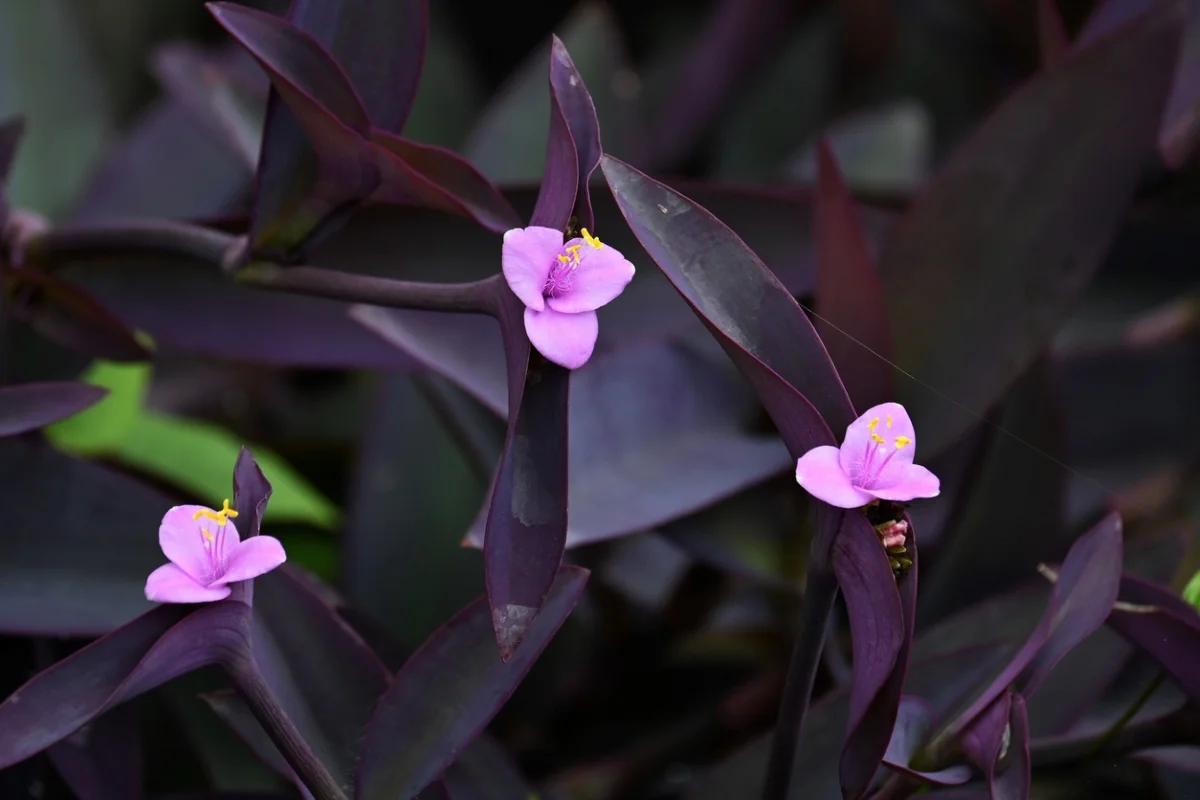
Wondering why your prized purple plant is looking a little… green?
Sunlight is the usual suspect, as the article mentions. But if your plant is getting plenty of light, check your fertilizer. Too much nitrogen encourages leafy, green growth at the expense of the anthocyanin pigments that create the purple color. Opt for a balanced, low-nitrogen fertilizer, like a bloom-booster formula (e.g., a 5-10-10 ratio), to encourage color, not just green bulk.
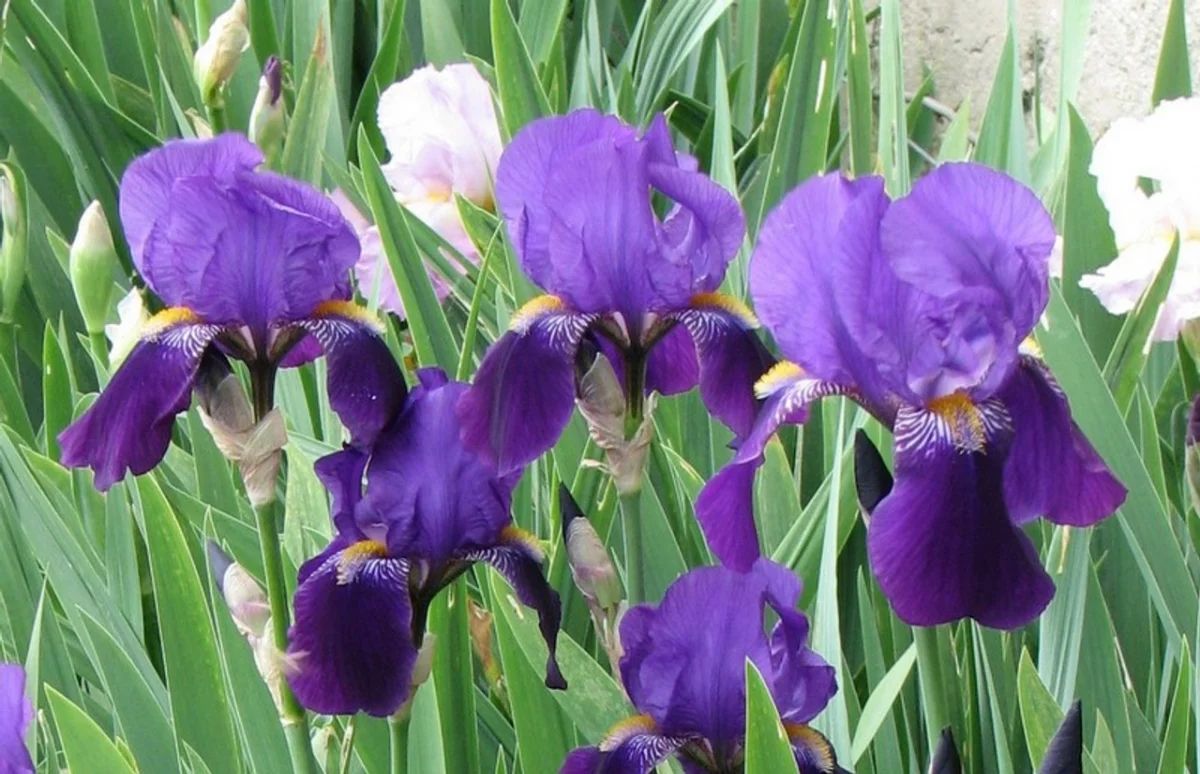
- Creates an immersive, sensory experience.
- Adds a feeling of calm and tranquility.
- Maintains visual interest even when flowers aren’t in bloom.
The secret? Focusing on purple foliage. While flowers are fleeting, leaves provide season-long color. Weave in plants like the deep, moody foliage of Heuchera ‘Palace Purple’, the dramatic leaves of a ‘Black Magic’ Elephant Ear, or the finely-textured, smoky look of Purple Fountain Grass (Pennisetum ‘Rubrum’) to build a lasting purple foundation.
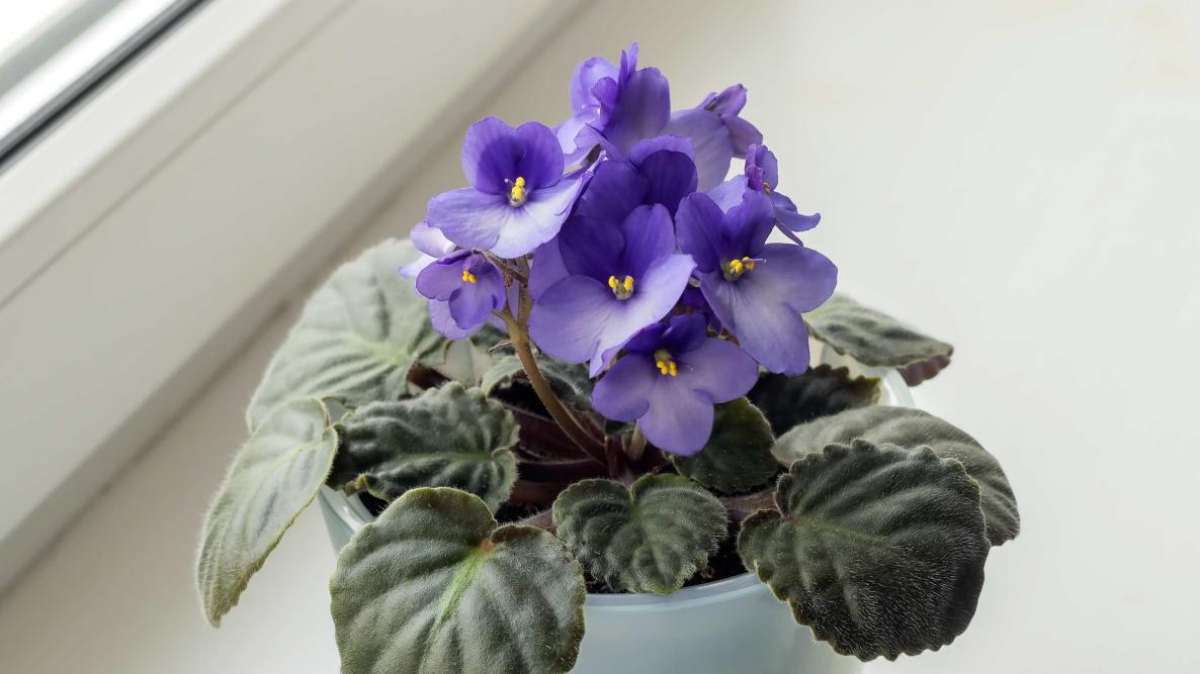
For a rich, velvety accent: Consider the ‘Black Knight’ Scabiosa. Its pincushion flowers are such a deep, dramatic purple they appear almost black. It’s a fantastic, easy-to-grow annual that adds a touch of gothic romance to any planting.
For a delicate, airy feel: Try Verbena bonariensis. Its tall, wiry stems are topped with clusters of small lavender-purple flowers that float above other plants, creating a beautiful, see-through screen of color.
Both are pollinator magnets and excellent choices for adding height and texture.
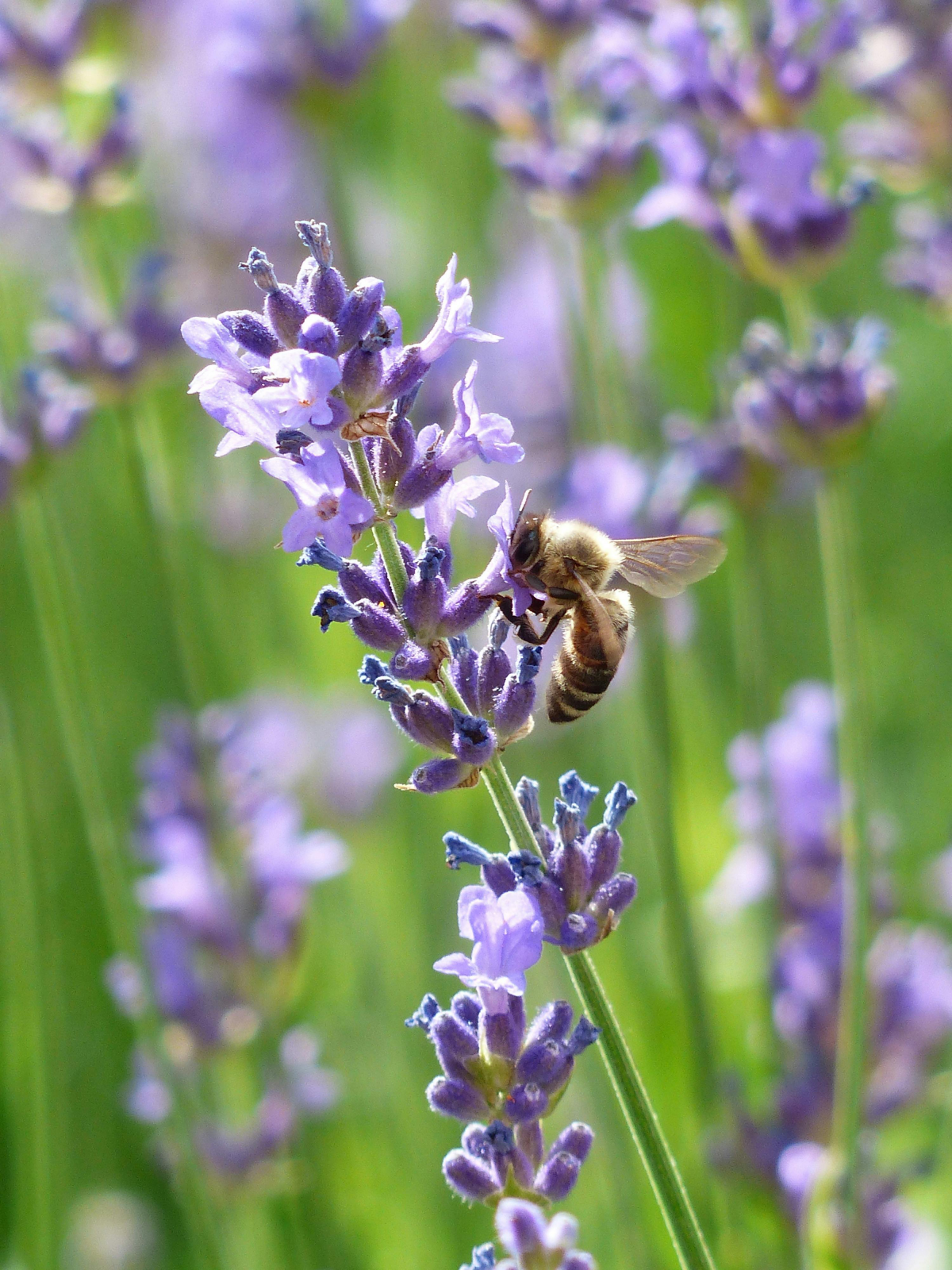
For the ultimate purple garden inspiration, look to history. A touch of garden royalty: The famous Purple Border at Sissinghurst Castle Garden in England, designed by Vita Sackville-West, is a masterclass in monochrome planting. It masterfully blends shades from mauve to deep violet, using varying heights and textures to create a sense of rhythm and depth. It proves that a single-color scheme can be the most dynamic of all.
Did you know that some of the most intense purple vegetables are also the most nutritious? The anthocyanins responsible for the color are powerful antioxidants.
Bring purple out of the flower bed and into the veggie patch! ‘Purple Sprouting’ broccoli, ‘Dragon Tongue’ beans, and ‘Black Nebula’ carrots not only add unexpected color and beauty to your kitchen garden but also a healthy boost to your plate. They make harvesting as much of a visual delight as it is a culinary one.










